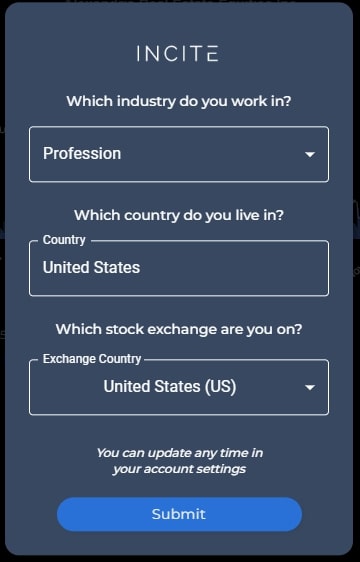20 Recommended Tips For Choosing AI Stock Analysis Sites
20 Recommended Tips For Choosing AI Stock Analysis Sites
Blog Article
Top 10 Tips To Evaluate The Strategy Customization Of AI stock Predicting/Analyzing Trading Platforms
AI software for predicting or analyzing stocks offers numerous options for customization that allow users to customize their platform to suit their own trading goals in terms of risk-taking, as well as market condition. A platform that provides a wide range of customization options can boost your trading performance. Here are 10 tips for evaluating the customization capabilities of platforms.
1. Evaluate Pre-Built Strategy Templates
Variety of templates: Determine whether the platform offers various pre-built trading strategies (e.g. day trading and swing investing, as well as long-term investments).
Easy of use: Evaluate the ease of modifying and use these templates according to your preferences.
Performance history. Check if the platform contains historical performance information for prebuilt strategies.
2. Create a Custom Strategy
Drag-and-drop: Look for platforms which offer drag-anddrop interfaces when creating custom strategies.
Coding options: Find out whether the platform supports custom-made code (e.g., Python, R, or proprietary scripting languages) for advanced users.
Flexibility - Make sure that the platform you choose allows you to establish rules for entry and exit, parameters for risk management, as well as other important elements of your strategic plan.
3. Check for Backtesting Capabilities
Data historical: Check if there are enough records to backtest your strategies.
Configurable settings: Make sure that you are able to modify settings during backtesting.
Performance metrics: Ensure that the platform provides detailed metrics of performance (e.g. Win rate Sharpe Ratio) in the back-testing of strategies.
4. Evaluate Real-Time Strategy Testing
Paper trading: Test strategies in real-time using paper trading or simulation.
Live testing - Check that you can test strategies using small amounts of money to see how they perform.
Real-time adjustments: Check whether strategies can be modified in real-time based on market conditions.
5. Examine the degree of integration using technological indicators
Find out if there's an indicator library.
Custom indicators: Make sure you have the ability to create or import custom indicators that you can incorporate into your strategies.
Examine the combinations of indicators.
6. Check for Risk Management Tools
Stop-loss/take-profit: Ensure the platform allows you to set stop-loss and take-profit levels within your strategies.
Position sizing: Check if you can define position sizing rules (e.g. fixed amount, percentage of portfolio) to control the risk.
Risk-reward rate: Determine if the platform permits setting specific risk-reward rates for strategies or individual trades.
7. Evaluate Multi-Asset Strategy Support
Asset classes: Check that the platform can handle multiple asset classes, such as stocks, ETFs and options.
Cross-assets strategies: Discover whether you're able to create strategies that take advantage of multiple asset classes.
Market coverage. Verify whether the platform includes the markets that you're looking to invest in (e.g. US international, cryptocurrencies).
8. Assess the Automation and Execution
Automated trading: Ensure the platform supports automated execution of strategies based upon established rules.
Types of orders - Make sure that the platform supports a variety of order types that can be used to execute strategies (e.g. stop, limit or market).
Latency: Ensure that the platform has a low latency when trading, particularly if you are using high-frequency strategies.
9. Look for strategies optimization tools
Parameter Optimization: Check that the platform has tools for optimizing the parameters of strategies (e.g. genetic algorithms grid search, genetic algorithms).
Machine Learning Integration: Find out if a platform integrates machine-learning to optimize and refine the strategy.
Analysis of scenarios: Check whether the platform permits testing strategies under different market scenarios (e.g. bull, bear, volatile).
Review Community Feedback and User Feedback
User feedback is important to assess the performance of a platform.
Community forums: See if you can find a forum where users discuss and share their custom strategies.
Support resources - Make sure that the platform provides guides and instructions for users to create and enhance strategies.
Bonus Tips
Free trial period: You are able to explore the options for customization of the platform using a a demo or free trial.
Scalability is essential. The platform needs to be able handle strategies that become more complex when your trading expands.
Customer support: Find out whether you can seek assistance for questions related to strategy or issues.
By following these tips you can evaluate the capabilities of an AI stock-predicting/analyzing trading platform to modify strategy. This will allow you to choose a platform that is aligned with your trading objectives and that allows you a way to implement and refine strategies. A platform that has powerful customization options will allow users to be able to change market conditions and improve your trading performance. View the top rated ai for stock predictions for website tips including AI stock trading bot free, best AI stock, ai for trading, ai investment app, ai for trading, investment ai, best ai for trading, ai investing app, AI stock market, AI stock trading bot free and more.
Top 10 Suggestions For Looking At The Scalability Ai Trading Platforms
It is essential to determine the scalability and performance of AI-driven stock prediction and trading platforms. This will guarantee that they are able to handle growing data volumes in addition to market complexity and user demands. Here are the top ten suggestions to evaluate scalability.
1. Evaluate Data Handling Capacity
TIP: Find out if the platform is able to analyse and process large data sets (e.g., historical stock data, real-time market feeds, and other data sources like news or social media).
The reason: Scalable systems need to handle the volume of data that is growing without performance degradation.
2. Test the capabilities of Real-Time Processing
Tips: Check how the platform processes real-time data streams, like live stock prices, or breaking news.
The reason: Inconsistent trading decisions can result in missed opportunities.
3. Cloud Infrastructure and Elasticity Cloud Infrastructure and Elasticity: Take a look
Tips. Check if the platform is using cloud-based infrastructure, such as AWS, Google Cloud and Azure that can expand resources according to demand.
Why: Cloud platform elasticity allows the system's size to alter based on the usage.
4. Algorithm Efficiency
TIP: Check the computational efficiency (e.g. deep learning and reinforcement-learning) of the AI models used for prediction.
Reason: Complex algorithmic structures are resource-intensive. Making them more efficient is the key to scaling.
5. Study Parallel and Distributed Computing
Tips: Make sure that the platform leverages distributed computing or parallel processing frameworks (e.g., Apache Spark, Hadoop).
What are they: These technologies speed up the processing of data and allow for analysis across many nodes.
Review API Integration, and Interoperability
Test the integration capabilities of the platform with APIs that are external to the platform.
Why? Seamless integration allows the platform to adapt to changing trading environments and data sources.
7. Analyze User Load Handling
Utilize a high-traffic simulator to test the response of the platform under stress.
Why: Performance of a scalable platform should not be affected by the growth of users.
8. Review the Model Retraining Adaptability
Tip: Examine how often and effectively the AI models are trained with new data.
What's the reason? As markets shift, models must be updated rapidly to remain precise.
9. Check for Fault Tolerance and Redundancy
TIP: Ensure your platform is equipped with failover mechanisms to deal with software or hardware malfunctions.
Reason Trading is expensive So the ability to handle faults and scale are crucial.
10. Monitor Cost Efficiency
Analyze your platform's cost that includes cloud's storage, cloud resources and computation power.
It's crucial to ensure a healthy balance between expenses and performance costs.
Bonus Tip: Future-Proofing
Platforms must be designed to incorporate new technologies like quantum computing and advanced NLP. They should also adjust to regulatory changes.
If you concentrate your focus on these elements it is possible to accurately evaluate the scalability AI prediction and trading platforms. This guarantees that they are durable, efficient, and also ready for further expansion. Read the most popular how to use ai for stock trading for site info including ai tools for trading, ai for trading stocks, stock predictor, chart ai trading, invest ai, trading ai tool, ai investment tools, how to use ai for stock trading, can ai predict stock market, ai trading tool and more.